Tales From the Wild Side
Spring 2020
Board of Directors
President (Interim) Henry Miller
Vice-President Mike Hammond
Secretary Gaby Emond
Treasurer Henry Van Ael
Committees
Newsletter Ilka Milne & Bob Saunders
Website Ilka Milne & Bob Saunders
Events Ilka Milne & Bob Saunders
Boardwalk Ahlan Johanson & Mike Hammond
Publicity Henry Miller & Ilka Milne
Stewardship Liaison Gaby Emond
Spring!
Ahh, Spring! At last! That season when it could be balmy or blizzarding, depending on the whims of nature. As I am writing this the official beginning of spring is still a few days away. This year the vernal equinox occurs March 19, 10:50 pm CDT, to be precise. If that seems early to you, it’s because it is. The last time it was as early as this was in 1896, 124 years ago! Check out this article from the Old Farmer’s Almanac or this one for a fascinating account of why this is so. But for actual spring, at least for the Rainy River District, and much of Canada, for that matter, we will have to wait until the beginning of May before we see the first leaves appearing on our trees, and spring truly commencing. However, meteorologically speaking, spring has already sprung. Meteorological seasons were created because traditional season vary from 89 to 93 days and it was difficult for meteorologists to compare statistics from one year to the next. And those wild swings in weather – they’re are all part of a meteorological spring. At this time of year, warm weather from southern United States collides with much colder weather in Canada and the northern US, and this big temperature difference can produce big storms, especially at the beginning of March when that temperature gradient is at its greatest.
Now, it’s not that I dislike winter, in fact, I love that season. I am able to travel by ski to so many places I am unable to visit at any other time of the year, and that feeling of sliding over the snow under blue skies and perfect snow is incomparable, a wonderful feeling of pure joy. But after 6 months of winter, even I am ready for spring. And spring is my favourite season. The days begin to warm, daylight lengthens, birds begin singing, and those that left in the fall begin to return. Here and there, violets, spring beauties, wood anemone, marsh marigolds, and bloodroot begin adding splashes of colour. The season is full of anticipation of and excitement for new discoveries. But until then, I’ll still be skiing until the last tiny spot of snow finally melts and disappears.
Hello and Goodbye
Saying hello to Trumpeter Swans and Canada Geese, early March arrivals at Point Park, and goodbye to Bohemian Waxwings, getting drunk on fermenting crabapples, soon heading north for the summer.
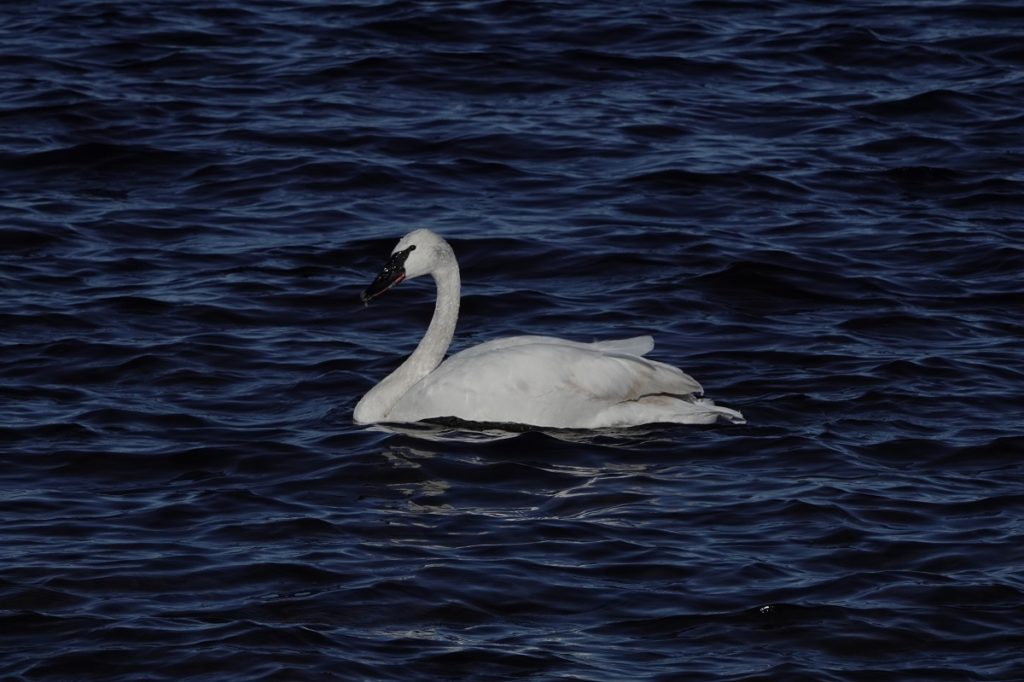
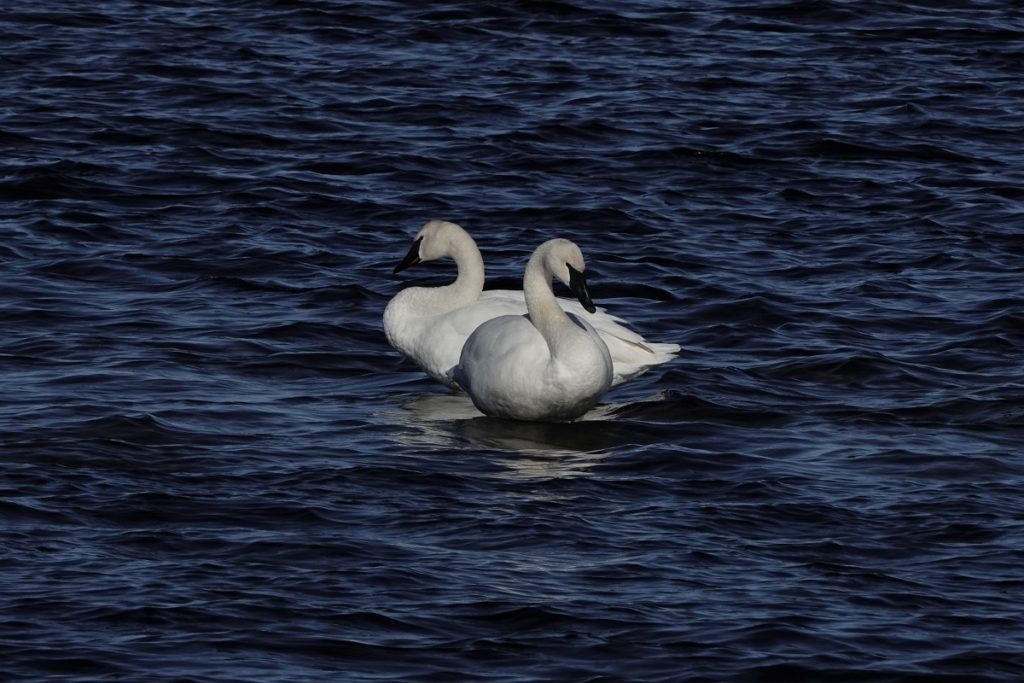
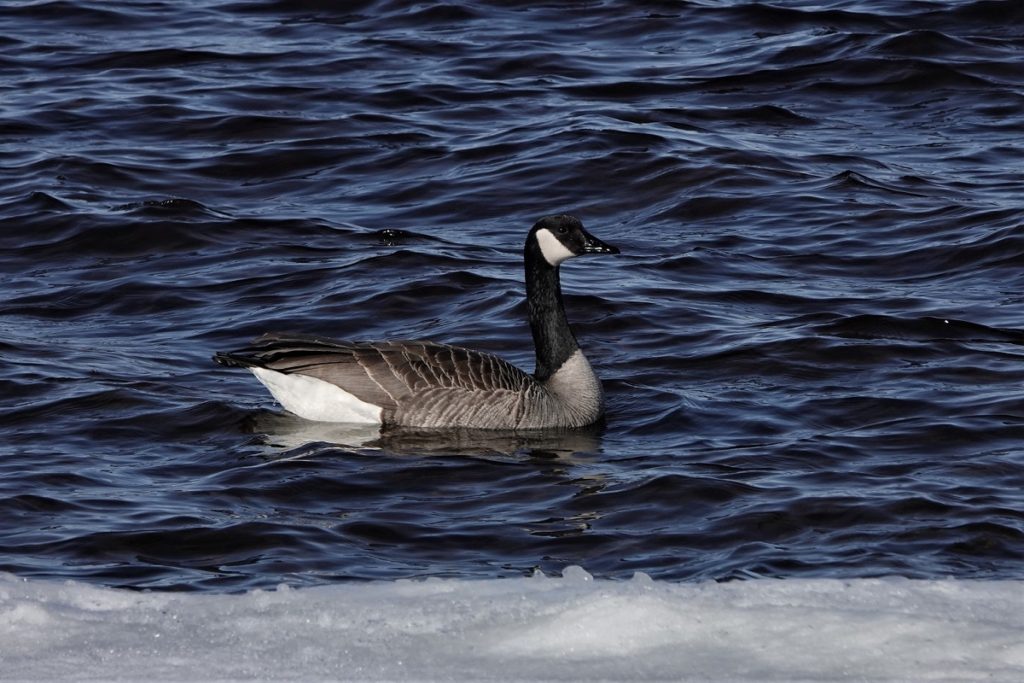
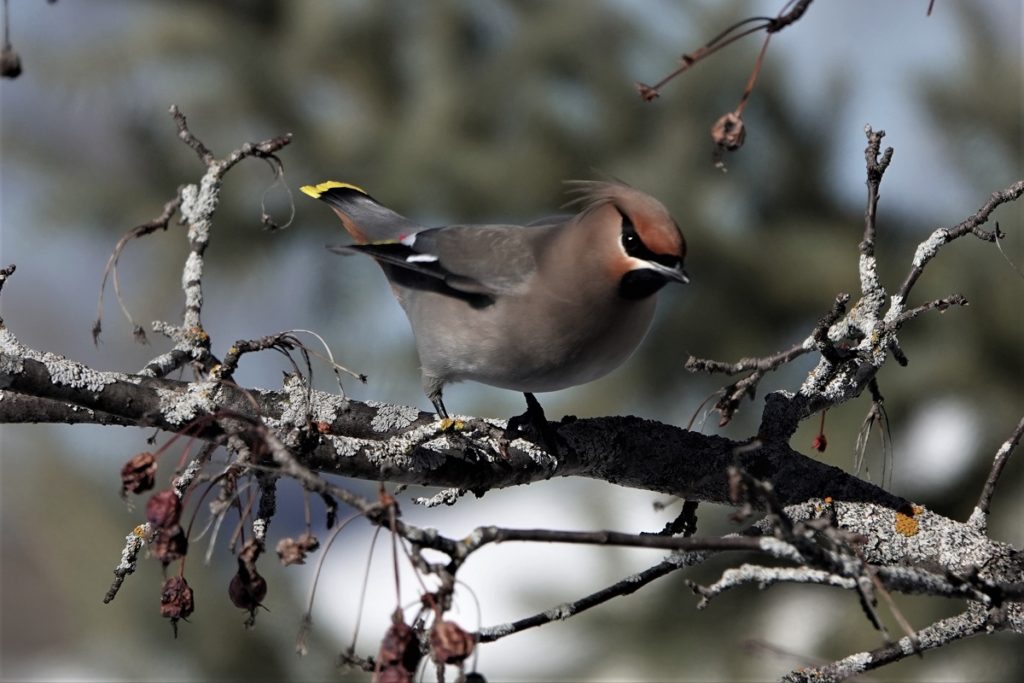

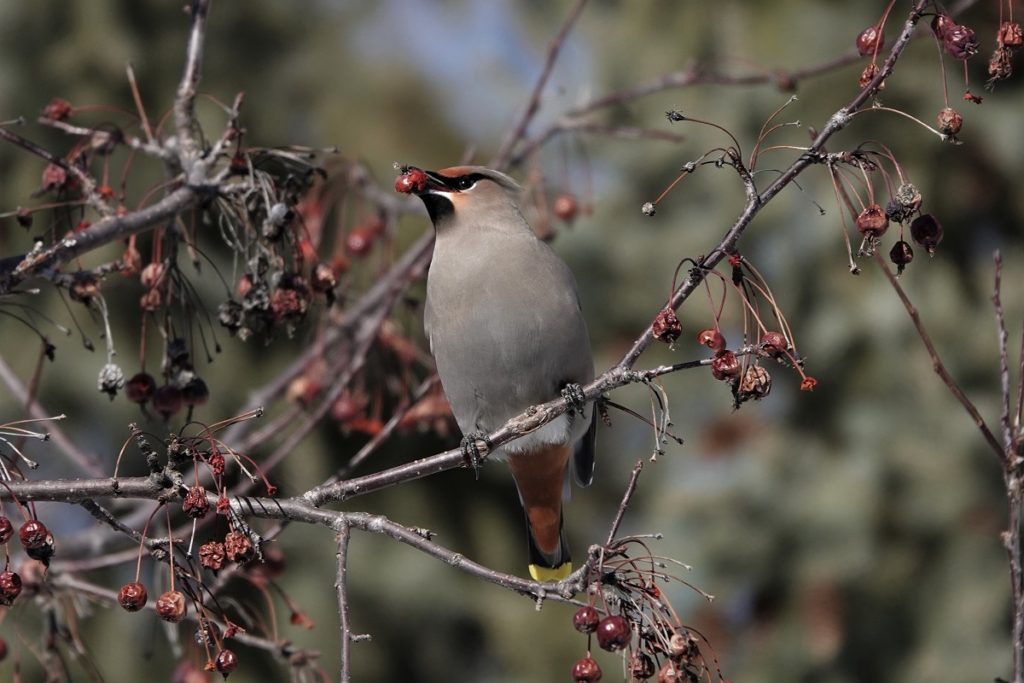
Poetry Corner
This wonderful description of spring is from “Anna Karenina” by Leo Tolstoy. While definitely not poetry, it is so beautifully written that it almost seems to be. It captures the transition from winter to spring so perfectly and so evocatively. The translation, it should be noted, is by David Magarshack.
“Spring was long in coming. For the last weeks of Lent the weather had been clear and frosty. By day it thawed in the sun, and at night there were seven degrees of frost; the crust of the snow was so hard that the peasants drove about on their carts without keeping to the roads. It was a white Easter. Then suddenly, on Easter Monday, a warm wind began to blow, the clouds gathered, and for three days and three nights heavy, warm rain came down in torrents. On Thursday the wind subsided, and a thick gray mist covered the countryside, as if to conceal the mysteries of the changes that were taking place in nature. In the mist the flood waters flowed, the ice floes began to crack and moved down the rivers, and the turbid, foaming torrents flowed faster, until on the following Monday, toward evening, the mist dispersed, the sky was covered with fleecy clouds and then cleared, and real spring had come. In the morning the bright sun rose and quickly devoured the thin ice covering the water, and the warm air all around vibrated with the exhalations of the reviving earth. The old grass turned green again and the young grass thrust out its needle-sharp blades, the buds swelled on the guelder-rose, the currant bushes, and the sticky, resinous birch trees; and in the gold-besprinkled willows the honey bee, which had only just emerged from its hive, flew about humming. Invisible larks broke into song over the velvet of the young, sprouting corn and the ice-covered stubble; peewits began to cry over the marshes and the low reaches of the rivers and streams, still overflowing with brownish water, and cranes and wild geese flew high across the sky, uttering their loud, spring cries. The cattle, their winter coats only partly shed and bald in patches, began to low in the pastures; bandy-legged lambs frisked round their bleating mothers, who were losing their fleece; swift-footed children ran about the quickly drying paths marked with imprints of bare feet; the merry voices of peasant women rose over the pond; and the axes of the peasants repairing their ploughs and harrows rang in the yard. Real spring had come.”
Here are two poems by Wendell Berry, whose poetry expresses a deep reverence for nature and the land.
The Peace of Wild Things
When despair for the world grows in me
and I wake in the night at the least sound
in fear of what my life and my children’s lives may be,
I go and lie down where the wood drake
rests in his beauty on the water, and the great heron feeds.
I come into the peace of wild things
who do not tax their lives with forethought
of grief. I come into the presence of still water.
And I feel above me the day-blind stars
waiting with their light. For a time
I rest in the grace of the world, and am free.
VIII (from Sabbaths 2011)
Off in the woods in the quiet
morning a redbird is singing
and his song goes out around him
greater than its purpose,
a welcoming room of song
in which the trees stand,
through which the creek flows.
And in honor of the Owl workshop, a poem by the incomparable Mary Oliver.
The Owl Who Comes
the owl who comes
through the dark
to sit
in the black boughs of the apple tree
and stare down
the hook of his beak,
dead silent,
and his eyes,
like two moons
in the distance,
soft and shining
under their heavy lashes—
like the most beautiful lie—
is thinking
of nothing
as he watches
and waits to see
what might appear,
briskly,
out of the seamless,
deep winter—
out of the teeming
world below—
and if i wish the owl luck,
and I do,
what am I wishing for that other
soft life,
climbing through the snow?
what we must do,
I suppose,
is to hope the world
keeps its balance;
what we are to do, however,
with our hearts
waiting and watching—truly
I do not know.
Nocturnal Owl Survey
By Graham Sorenson, BC Projects Coordinator, Birds Canada
Many migratory bird species are still enjoying their tropical wintering grounds, while other birds that stay in Canada through the winter are busy just surviving the cold. Canada’s owls, however, are poised to begin their early-spring courtship routines. And with the start of the owl breeding season, hundreds of volunteers across Canada will head out onto rural roads at night to participate in the Nocturnal Owl Survey (NOS). These volunteers are trained to collect valuable population information that can be applied to owl conservation, and to follow protocols that minimize disturbance to owls in the process.
Owls are directly affected by changes in forests. These important predators are relatively easy to identify, but because they’re nocturnal and nest early in the season, they can be difficult to monitor. Information on owl distribution and abundance is essential for developing sound conservation strategies, identifying species in need of conservation action, and evaluating the effectiveness of forest management programs.
Through Nocturnal Owl Surveys across Canada, over 1000 volunteers count owls along isolated roads, documenting population trends and breeding range limits. Surveyors enjoy the solitude and peace of these early season events — a precursor to a busy spring. This survey has been running in Ontario for over 25 years, and this coming spring marks the 20th year for many other provinces.
Results from the 2019 Nocturnal Owl Survey
In 2019, a total of 688 routes were surveyed across the participating provinces and territories. Northern Saw-whet, Great Horned, and Barred owls were the most commonly detected owl species in every region. In the territories and in northern BC, Boreal Owls were also commonly reported.
Out of the 16 owl species that breed in Canada, ten were detected during the 2019 Nocturnal Owl Survey. The species that were detected tend to be more strictly nocturnal and vocalize more regularly compared to the Snowy Owl, Northern Hawk-Owl and Short-eared Owl, which were not detected during the survey. These three species are often silent and regularly seen during the day. The other three undetected species were the Burrowing, Barn, and Spotted owl, all species of conservation concern.
So what happens next with the information gathered by owl survey volunteers? Dr. Danielle Ethier, Bird Population Scientist at the Birds Canada National Data Centre, has some news that’s sure to excite NOS participants and others who are interested in owls: “In 2020, [we] plan to put the Nocturnal Owl Survey data to good use! Specifically, our intentions are to clean, compile, and generate species-specific population trends, similar to those produced for the Canadian Migration Monitoring Network and Raptor Population Index. These results will give us a better understanding of how owl populations are doing in your region. A personal thank-you to all the volunteers who made this research possible!”
Further Information for the Ontario Nocturnal Owl Survey at Birds Canada Ontario Owl Survey.
At the moment four routes in the Rainy River District are available and need volunteers to monitor them. Locations for these routes can be found at the Birds Canada Ontario Owl Survey website noted above. Contact Kathy Jones <volunteer@birdscanada.org>
Upcoming Events
All events for the foreseeable future cancelled owing to the COVID-19 crisis.
March, 21 Birding at Point Park and Emo
Birding along the Rainy River at Point Park and the marina in Fort Frances, and along Highway 602 to Emo, and birding in the town of Emo. Contact Bob at bobsaunders01@gmail.com
March 25 Owl Identification Workshop
At Shaw Room of Fort Frances Library, from 6-8 pm. Ilka Milne will be presenting an owl identification workshop before the April owl survey season begins. This workshop is offered to people who are interested in owls, as well as those who might want to join the survey.
Cancelled owing to COVID-19
April 11 Birding at Bob’s
Birding at Stampe Creek, Government Landing, and the Wild Horse River (NW Bay Rainy Lake). bobsaunders01@gmail.com